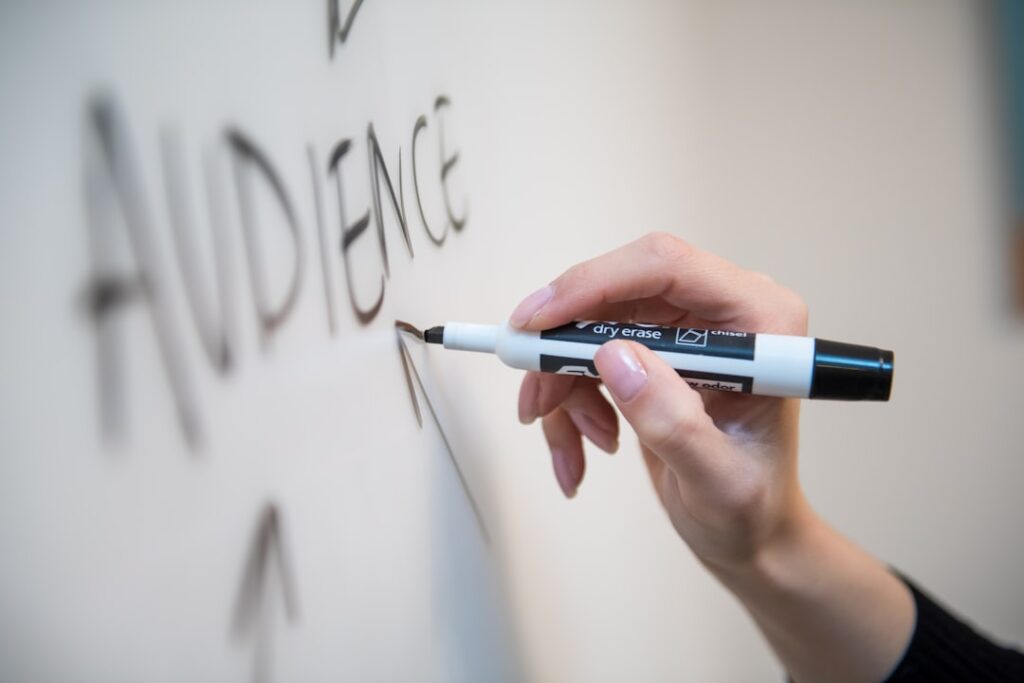
Mastering the Art of Keynote Speaking
Understanding the audience is a crucial aspect of delivering a successful presentation. It is important to consider the demographics of the audience, such as age, gender, education level, and cultural background. By understanding these factors, you can tailor your message to resonate with the audience and ensure that it is relevant and relatable to them. For example, if you are presenting to a group of young professionals, you may want to use more modern language and examples that are relevant to their experiences. On the other hand, if you are presenting to a group of senior executives, you may want to use more formal language and examples that are relevant to their industry.
In addition to demographics, it is also important to consider the audience’s knowledge and interest in the topic. Are they familiar with the subject matter, or is this new information for them? Are they enthusiastic about the topic, or are they skeptical? By understanding the audience’s level of knowledge and interest, you can adjust your message to meet their needs. For example, if you are presenting to a group of experts in your field, you may want to delve into more technical details and advanced concepts. However, if you are presenting to a general audience, you may want to focus on providing a high-level overview and using more accessible language.
Key Takeaways
- Understanding the audience is crucial for tailoring the message to their needs and interests.
- Crafting a compelling message involves using storytelling, humor, and relatable examples to captivate the audience.
- Engaging delivery techniques such as eye contact, vocal variety, and body language help keep the audience’s attention.
- Utilizing visual aids like slides, videos, and props can enhance the audience’s understanding and retention of the message.
- Managing nervousness and anxiety can be achieved through deep breathing, positive self-talk, and practice.
- Handling Q&A sessions requires active listening, concise responses, and the ability to gracefully address challenging questions.
- Evaluating and improving performance involves seeking feedback, self-reflection, and continuous learning and development.
Crafting a Compelling Message
Crafting a compelling message is essential for capturing the audience’s attention and keeping them engaged throughout your presentation. A compelling message is one that is clear, concise, and impactful. It should clearly communicate the main points you want to convey and provide the audience with a clear takeaway. To craft a compelling message, it is important to start by defining the key objectives of your presentation. What do you want the audience to learn or take away from your presentation? Once you have defined your objectives, you can then structure your message around these key points.
When crafting your message, it is important to use language that is engaging and easy to understand. Avoid using jargon or technical language that may alienate some members of the audience. Instead, use simple and straightforward language that is accessible to everyone. Additionally, it is important to use storytelling techniques to make your message more relatable and memorable. By incorporating real-life examples and anecdotes into your presentation, you can make your message more engaging and help the audience connect with the material on a personal level.
Engaging Delivery Techniques
Engaging delivery techniques are essential for keeping the audience interested and attentive during your presentation. One effective technique is to use vocal variety to emphasize key points and maintain the audience’s interest. By varying your pitch, tone, and volume, you can add emphasis and emotion to your delivery, making your message more engaging and impactful. Additionally, using pauses strategically can help to create suspense and draw the audience’s attention to important points.
Another engaging delivery technique is using body language to convey confidence and enthusiasm. By maintaining good posture, making eye contact with the audience, and using expressive gestures, you can convey confidence and passion for your topic. This can help to captivate the audience and keep them engaged throughout your presentation. Additionally, using visual aids such as slides or props can help to reinforce key points and make your presentation more dynamic and visually appealing.
Utilizing Visual Aids
Visual aids are an effective way to enhance your presentation and make your message more memorable. One popular visual aid is the use of slides, which can help to illustrate key points and provide visual support for your message. When creating slides, it is important to keep them simple and uncluttered, with minimal text and impactful images or graphics. This can help to keep the audience focused on your message and prevent them from becoming overwhelmed with information.
In addition to slides, props can also be used as visual aids to enhance your presentation. For example, if you are presenting about a new product, you may want to bring in a physical prototype to demonstrate its features and functionality. This can help to make your presentation more interactive and engaging for the audience. Additionally, using video clips or animations can help to bring your message to life and make it more dynamic and engaging.
Managing Nervousness and Anxiety
Managing nervousness and anxiety is a common challenge for many presenters, but there are several strategies that can help to alleviate these feelings and improve your confidence. One effective strategy is to practice your presentation multiple times before the actual event. By rehearsing your delivery, you can become more familiar with the material and feel more confident in your ability to deliver it effectively. Additionally, practicing in front of a mirror or recording yourself can help you identify areas for improvement and refine your delivery.
Another strategy for managing nervousness is to focus on deep breathing and relaxation techniques before your presentation. Taking deep breaths can help to calm your nerves and reduce anxiety, allowing you to approach your presentation with a clear mind and focused energy. Additionally, positive self-talk can help to boost your confidence and shift your mindset from one of anxiety to one of empowerment.
Handling Q&A Sessions

Handling Q&A sessions effectively is an important aspect of delivering a successful presentation. One key strategy is to anticipate potential questions that the audience may have and prepare thoughtful responses in advance. By thinking through potential questions and formulating clear and concise answers, you can ensure that you are well-prepared to address any inquiries that arise during the Q&A session.
During the Q&A session, it is important to actively listen to each question and provide thoughtful responses that address the audience’s concerns. Avoid rushing through answers or becoming defensive if faced with challenging questions. Instead, maintain a calm and composed demeanor, and take the time to fully understand each question before providing a thoughtful response.
Evaluating and Improving Performance
After delivering a presentation, it is important to take time to evaluate your performance and identify areas for improvement. One effective strategy is to solicit feedback from trusted colleagues or mentors who can provide constructive criticism and suggestions for improvement. By seeking feedback from others, you can gain valuable insights into how your presentation was received and identify areas for growth.
In addition to seeking feedback from others, it can also be helpful to conduct a self-assessment of your performance. Take time to reflect on what went well during your presentation and what could be improved for future presentations. Consider aspects such as delivery style, content organization, and audience engagement, and identify specific areas where you can make adjustments for improvement.
In conclusion, delivering a successful presentation requires careful consideration of the audience, crafting a compelling message, engaging delivery techniques, utilizing visual aids, managing nervousness and anxiety, handling Q&A sessions effectively, and evaluating and improving performance. By focusing on these key areas, presenters can enhance their ability to captivate audiences and deliver impactful presentations that resonate with their listeners.
FAQs
What is keynote speaking?
Keynote speaking is a form of public speaking where a speaker delivers a speech or presentation at the beginning of an event, conference, or seminar. The keynote speaker is often a prominent figure in their field and sets the tone for the rest of the event.
What is the purpose of keynote speaking?
The purpose of keynote speaking is to inspire, motivate, and educate the audience. Keynote speakers often share their expertise, insights, and experiences to provide valuable takeaways for the audience.
What topics do keynote speakers typically cover?
Keynote speakers can cover a wide range of topics depending on the nature of the event. Common topics include leadership, innovation, technology, entrepreneurship, personal development, and industry-specific trends.
How are keynote speakers selected?
Keynote speakers are typically selected based on their expertise, reputation, and relevance to the theme of the event. Event organizers may also consider the speaker’s ability to engage and captivate the audience.
What makes a good keynote speaker?
A good keynote speaker is someone who can effectively communicate their message, engage the audience, and provide valuable insights and takeaways. They should also be able to tailor their presentation to the specific needs and interests of the audience.
How long does a keynote speech typically last?
Keynote speeches can vary in length, but they typically range from 30 minutes to an hour. The length of the speech is often determined by the event organizers and the overall schedule of the event.






Responses